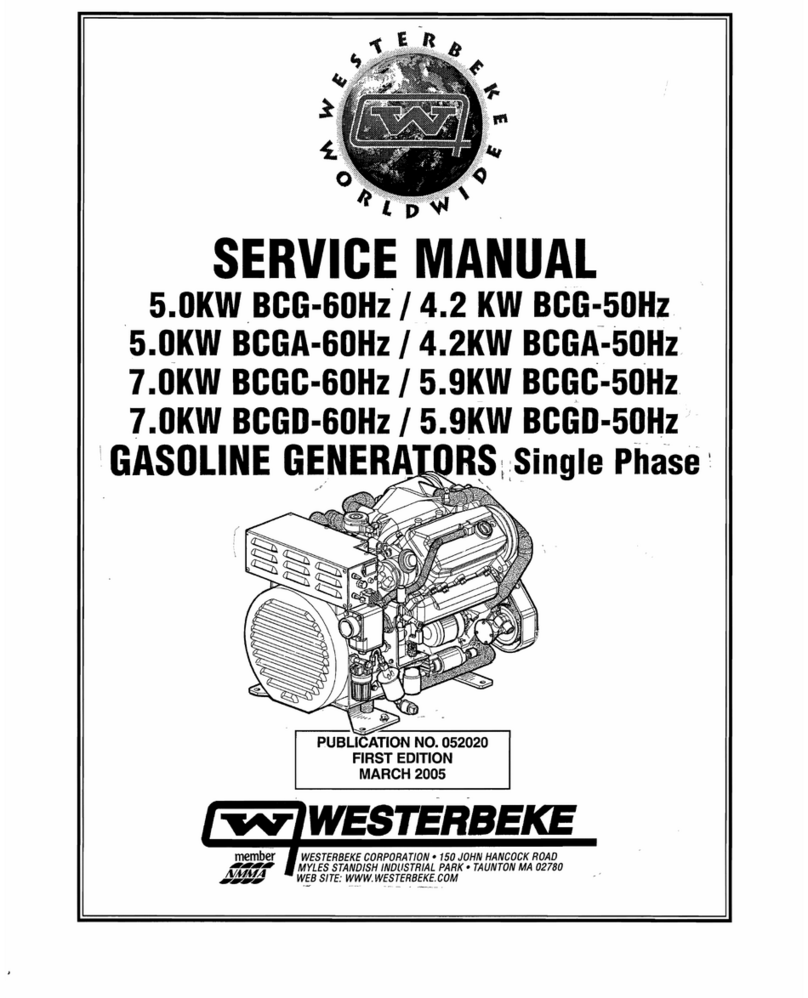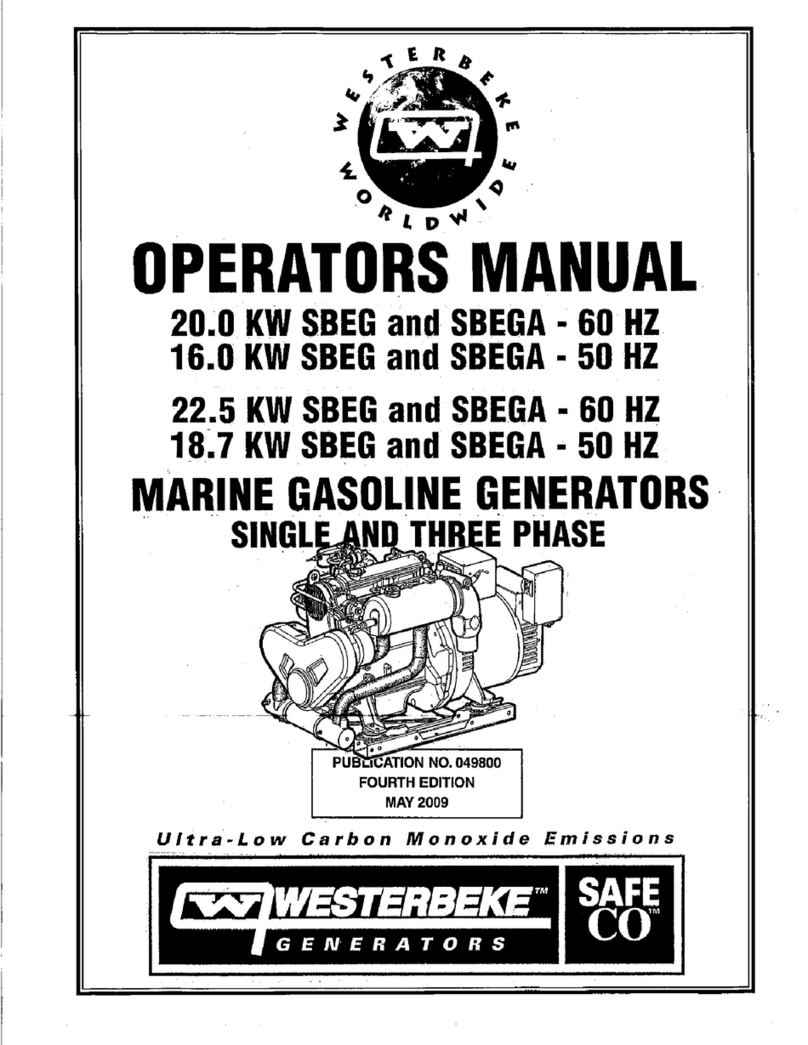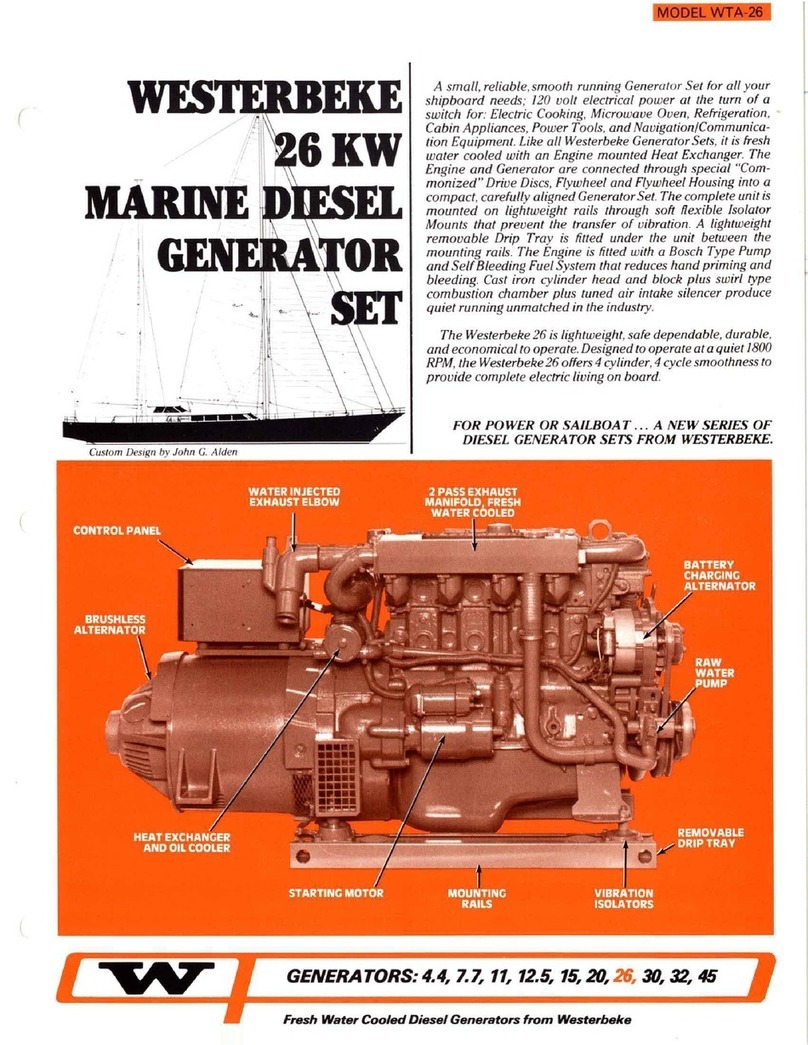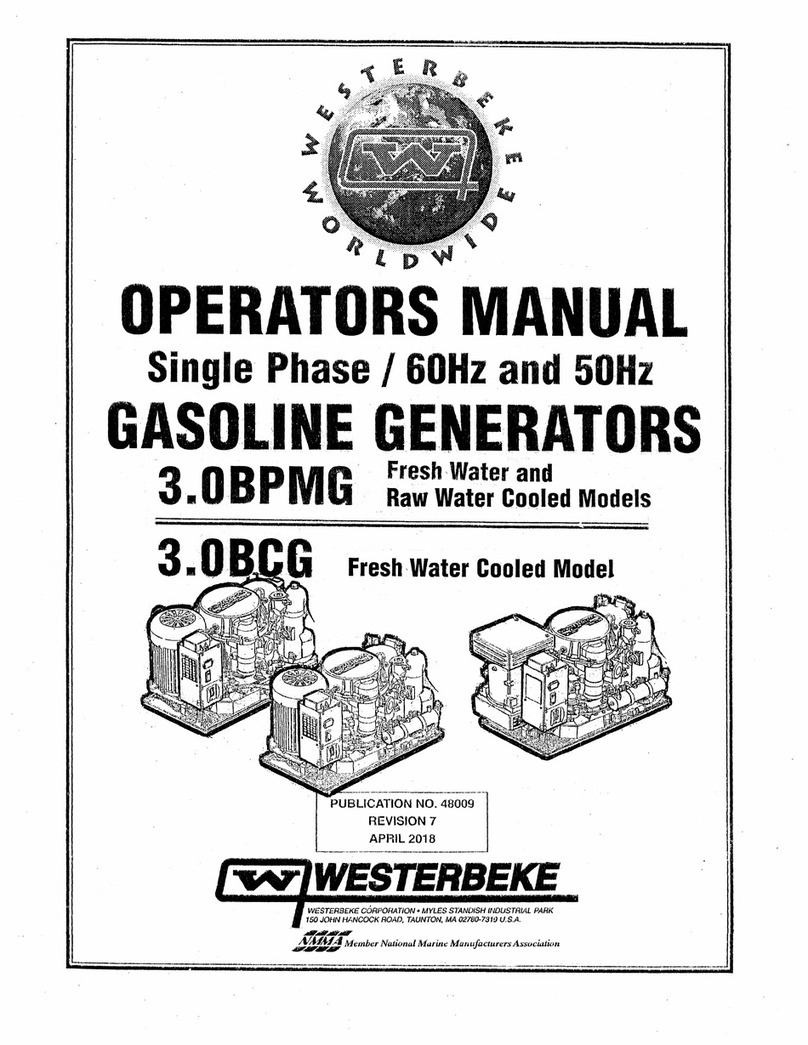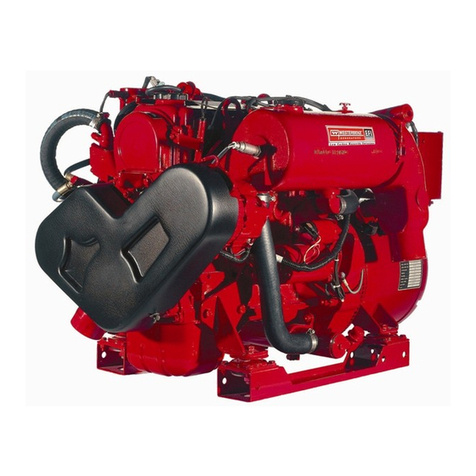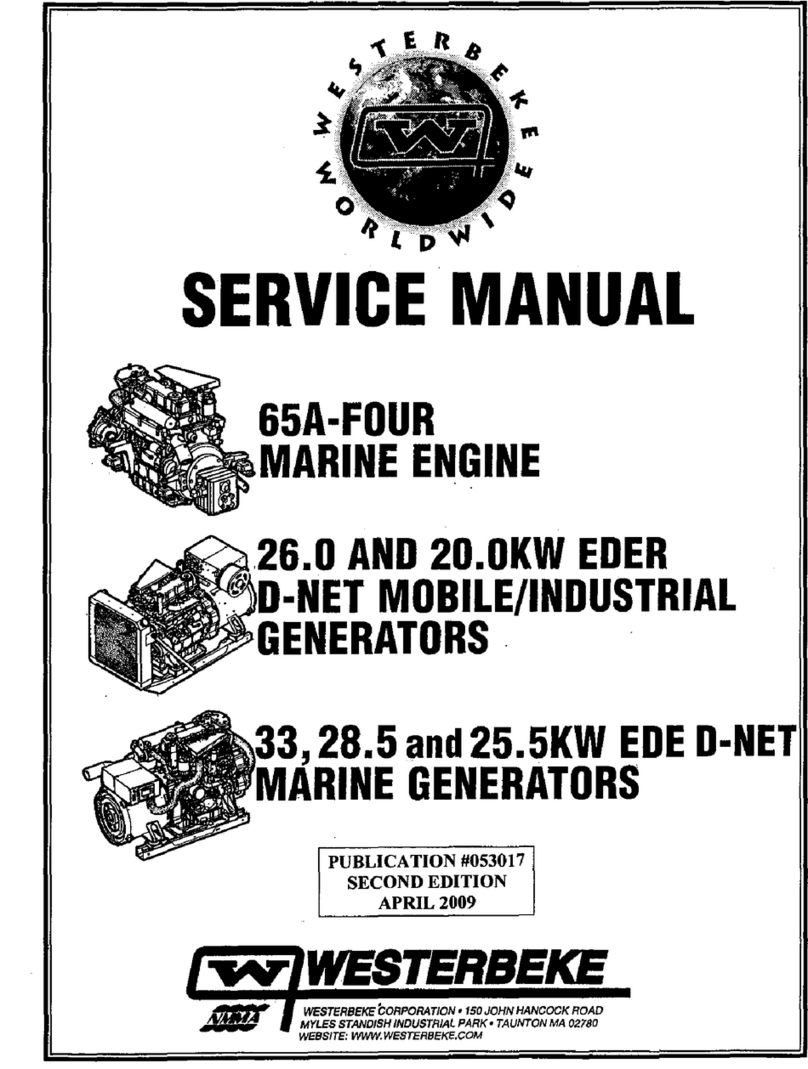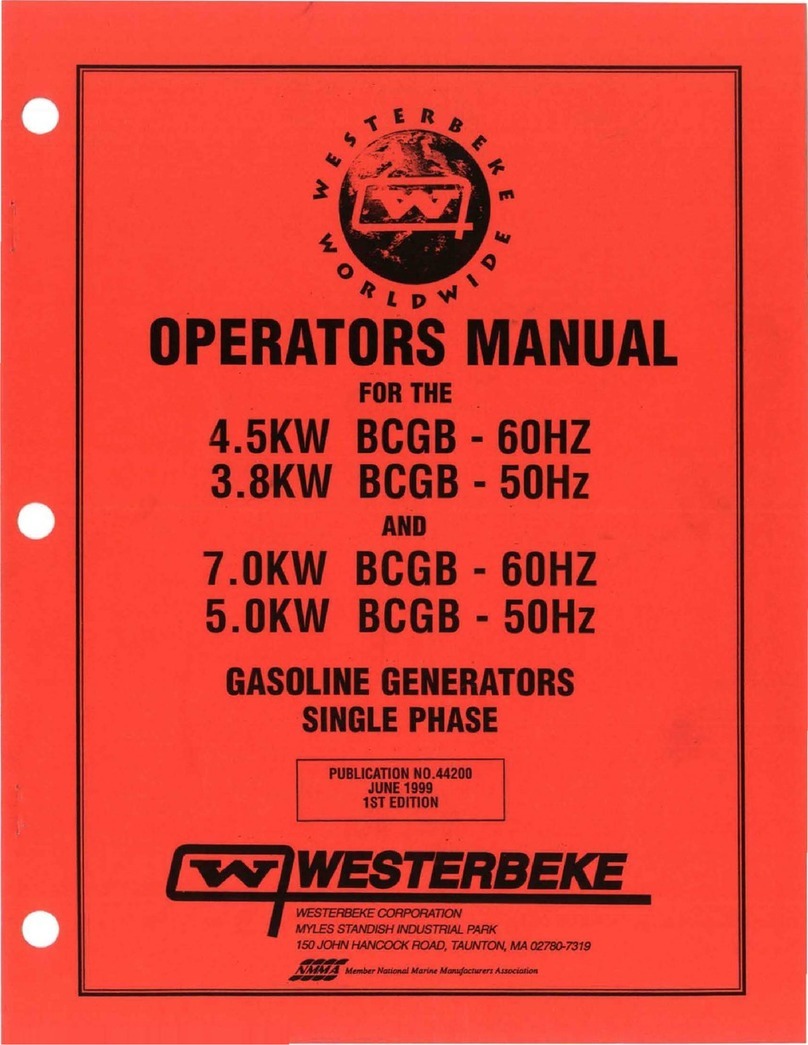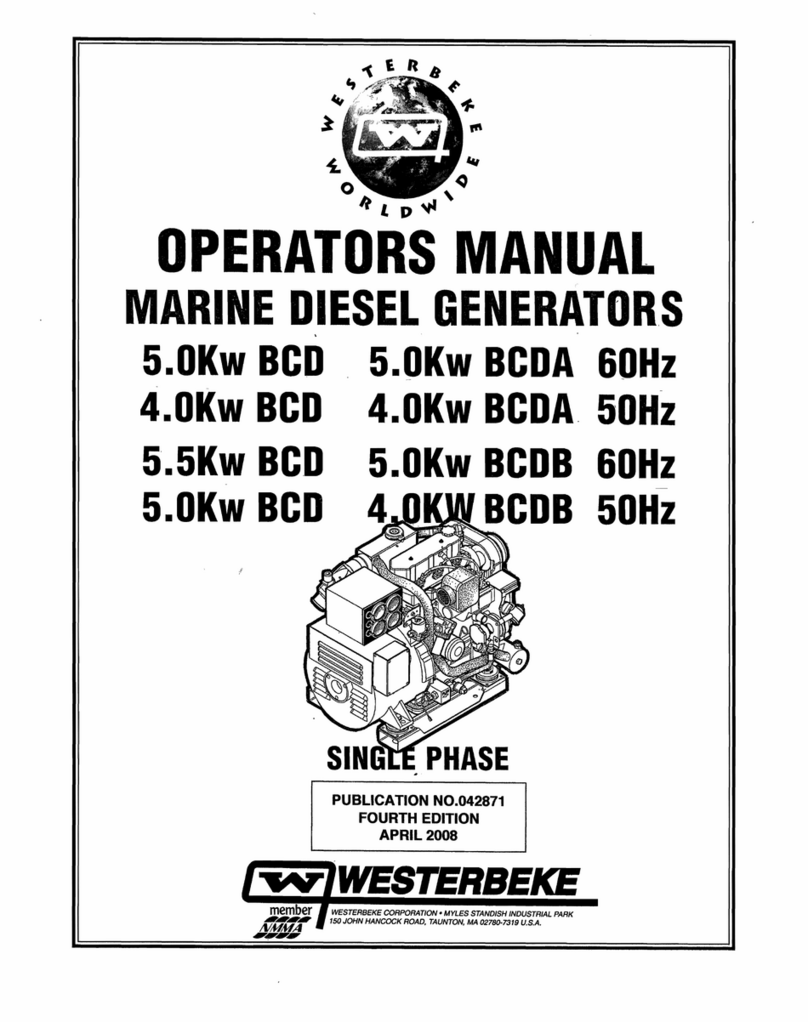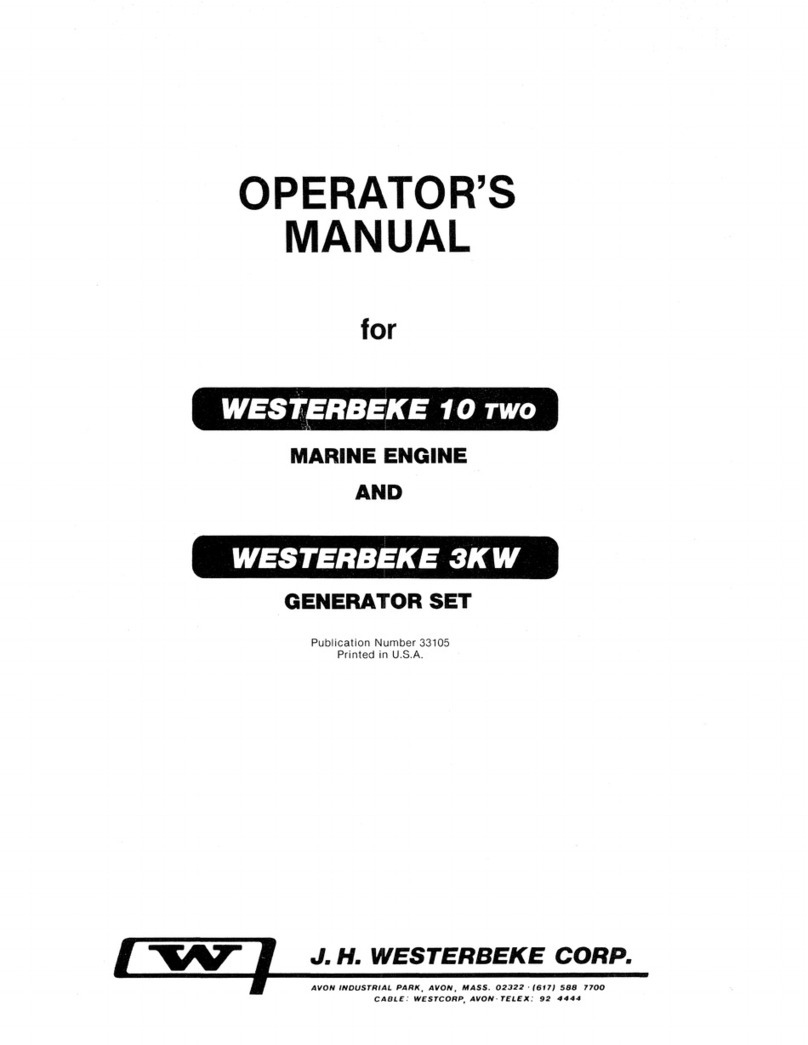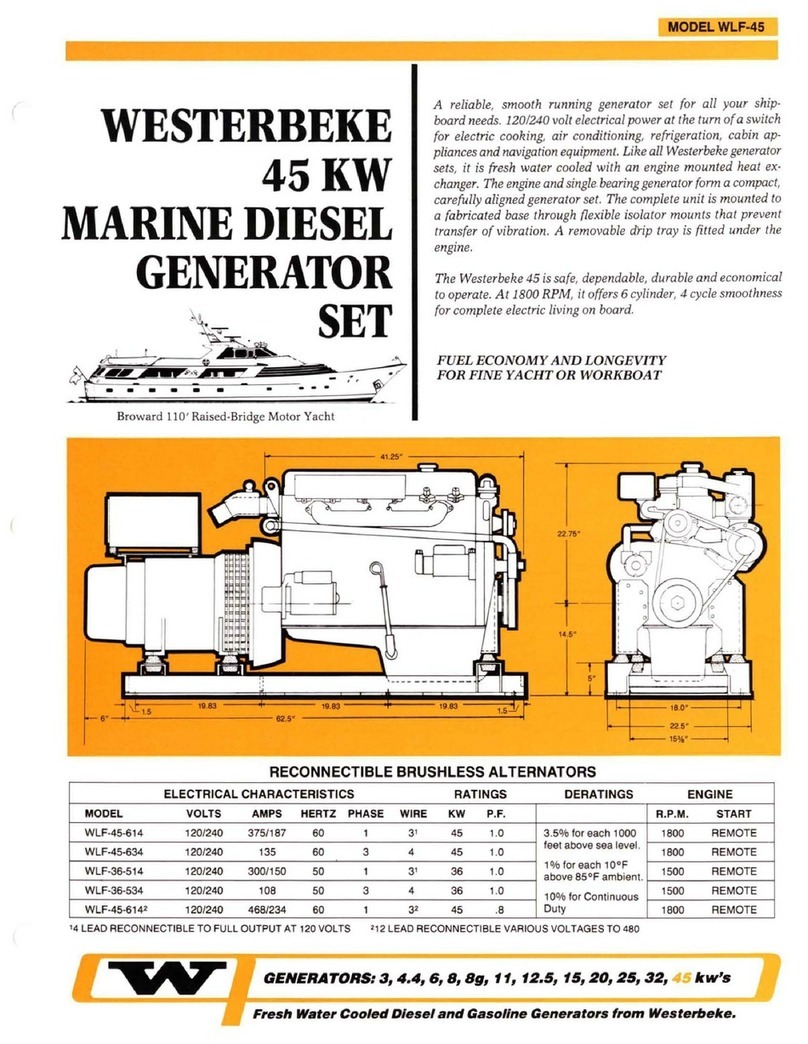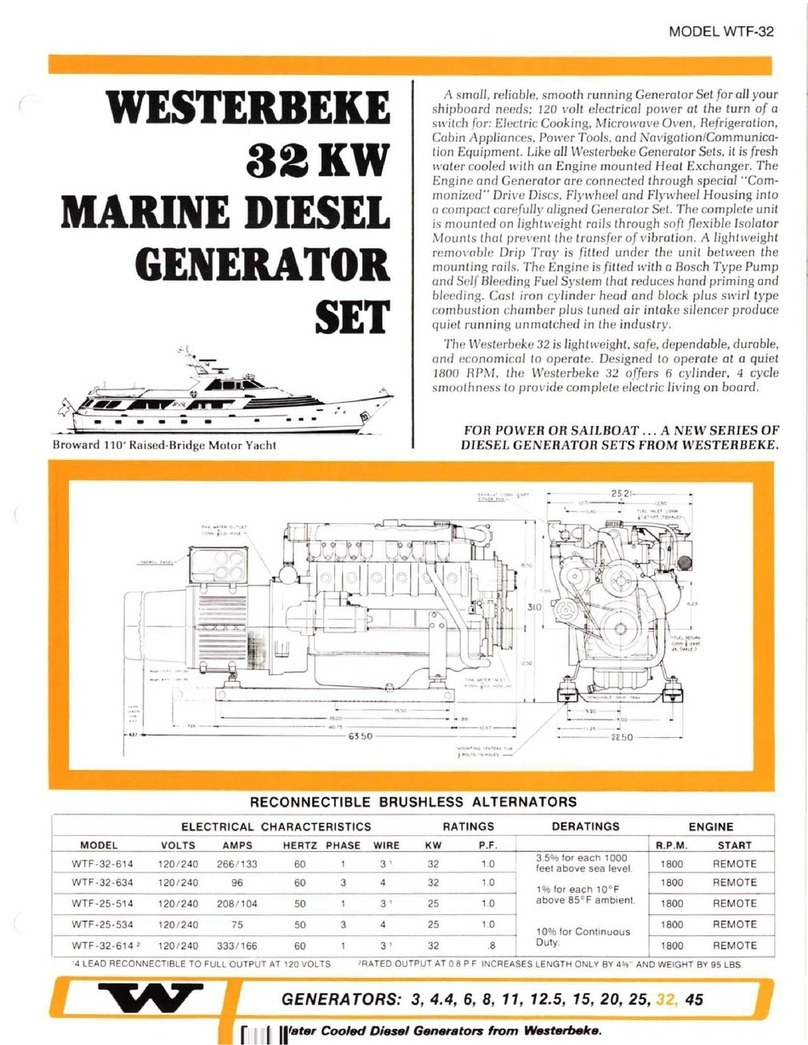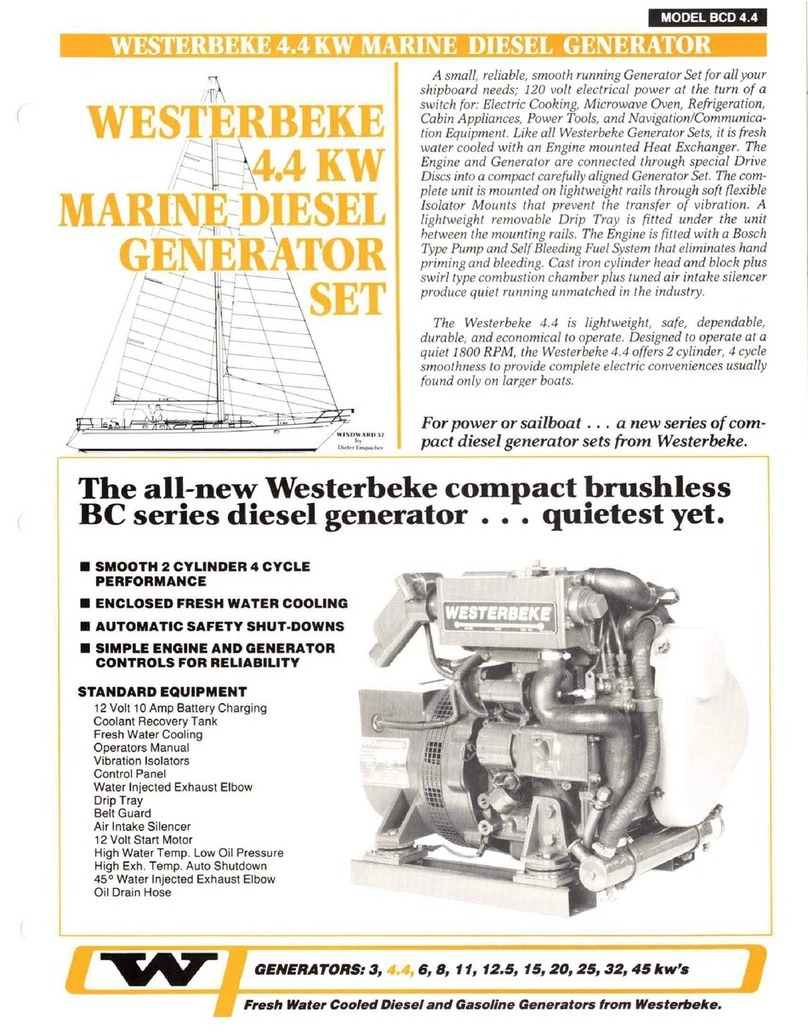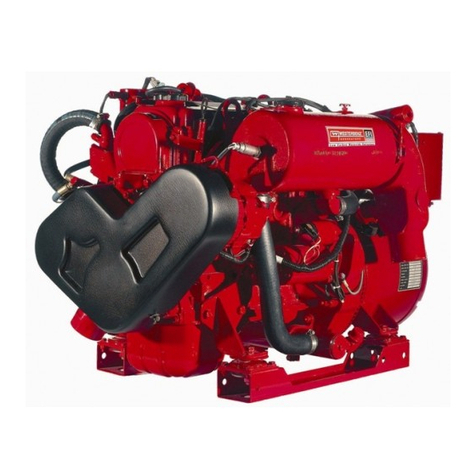
TESTING
FOR
OVERHAUL
HOW
TO
DETERMINE
ENGINE
OVERHAUL
PERIOD
Cause
of
Low
Compression
Generally, the time at which an engine should be overhauled
is
determined
by
various conditions such as lowered engine
power output, decreased compression pressure, and increased
fuel and oil consumption. The lowered engine power output
is
not necessarily due to trouble with the engine itself, but
is
sometimes caused by improper oil, clogged filters or a faulty
carburetor.
The decrease in compression pressure is caused by many fac-
tors. It is, therefore, necessary to determine a cause or causes
on the basis
of
data produced by periodic inspection and
maintenance. Oil analysis on a seasonal basis is a good
means
of
monitoring engine internal wear. When caused by
worn cylinders or piston rings, the following symptoms will
occur: 1 Low engine power output
2 Increased fuel consumption
3 Increased oil consumption
4
Hard
engine starting
5 Noisy engine operation
These symptoms often appear together. Symptoms 2 and 4
can result also from improper fuel regulation
or
a faulty car-
buretor. They are caused also by defective electrical devices
such as the battery, starter
or
spark plugs. Therefore it is
desirable to judge the optimum engine overhaul time by the
lowered compression pressure caused by worn cylinders and
pistons plus increased oil consumption. Satisfactory combus-
tion
is
obtained only under sufficient compression pressure.
If
an engine lacks compression pressure, incomplete combus-
tion
of
fuel will take place even
if
other parts
of
the engine
are operating properly.
To
determine the period
of
engine
overhaul, it
is
important to measure the engine compression
pressure regularly.
At
the same time, the engine speed at
which the measurement
of
compression pressure is made
should be checked because the compression pressure varies
with engine rpm. The engine rpm can be measured at the
front end
of
the crankshaft.
NOTE:
To
test engine compression see the
ENGINE
ADJUSTMENT
section
of
this manual.
OVERHAUL
CONDITIONS
Compression pressure tends to increase a little in a new
engine until piston rings and valve seats have been broken in.
Thereafter, it decreases gradually with the progress
of
wear
of
these parts.
When decrease
of
compression pressure reaches the repair
limit, the engine must be overhauled.
The enginerequires overhaul when oil consumption
is
high,
blowby evident, and compression values are at minimum or
below. Engine compression should be
178
psi
(1260 Kpa) at
400 rpm With a limit 137
psi
(860 Kpa). Pressure should not
differ
by
more than 14
psi
(100 Kpa) between cylinders. See
ENGINE
COMPRESSION in this manual.
ENGINE
OVERHAUL
The following sections contain detailed information
relating to the major components and systems
of
the engine.
Included are disassembly and inspection instructions for the
guidance
of
suitable equipped and staffed marine engine ser-
vice and rebuilding facilities. The necessary procedures
should be undertaken only by such facilities.
Additional detailed information and specifications are
provided in other sections
of
this manual, covering the
generator, alternator, starter motor, engine adjustments,
cooling pumps, etc.
DISASSEMBLY
1.
Before disassembly and cleaning, carefully check for
defects which cannot be found after disassembly and
cleaning.
2. Clean the engine exterior.
3. Perform disassembly in a proper order using proper tools.
Keep disassembled parts in order. Apply oil when neces-
"sary. Take special care to keep the fuel system parts from "
intrusion
of
dust and dirt.
SERIAL
NUMBER
LOCATION~~
~
The engine serial
FiIl
in
the information
l";~0~Ob')..
~~\
'!umber
is
str;zmped
below for
referenc~_
~/
3-:>
II
znto
the engme block.
0~
f"'~
~
~I
'~
~
!~I(
I 1
I
\1
~~==~~~~
The engine model
number
and
"serial
numberare printed
on a decal on the
engine manifold.
The generator serial
number is stamped
on the top
of
the
generator housing.
An
additional decal
is located on the top
of
the
generator
housing.
Engines & Generators
3
